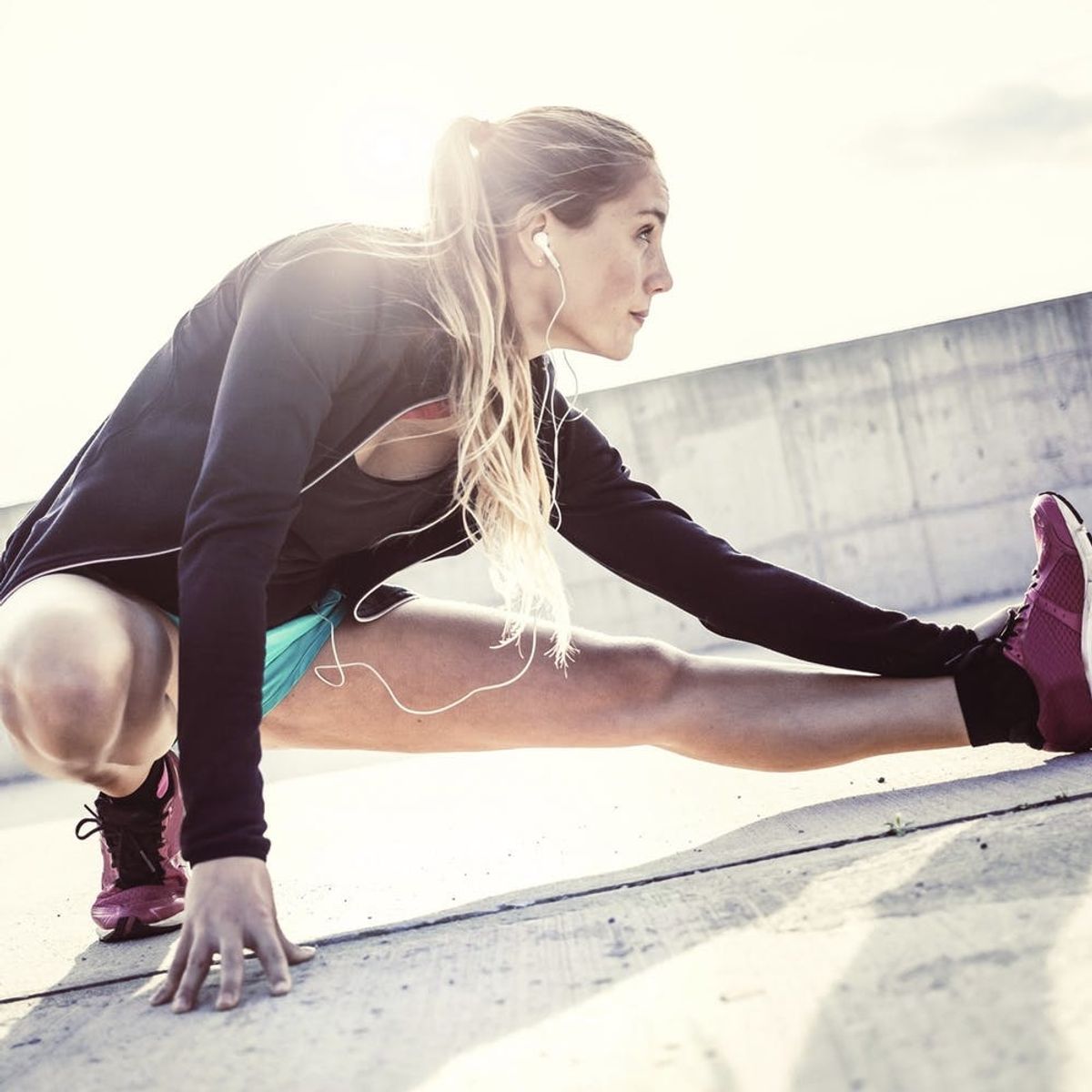These Tips Will Make Your Warm Up and Cool Down 100

Getting in a good summer workout is an awesome way to improve your overall health and stay motivated when pool parties and outdoor happy hours are running rampant. But when you’re already logging 30-60 minute workouts, sometimes it can be tough to tack on an extra few minutes before and after to make sure you’re properly warmed up and cooled down. To find out the best way to maximize our time in the gym pre- and post-sweat sesh, we caught up with Lindsey Bomgren, a personal trainer, group fitness and barre instructor, and the blogger behind Nourish Move Love. Read on for her tips on making sure you’re staying as safe and strong as possible.
1. Know the order. There are two main types of stretching: dynamic and static. Dynamic stretching consists of stretches that require movement, while static stretching is focused on isolating one muscle or body part that is minimally challenged. “Typically, the proper sequence for a workout should be a dynamic warmup followed by additional light stretching and then your workout,” says Lindsey. “Once your workout, whatever it is, is complete, you should take part in a cool down and static stretch.”
2. Start dynamic. Dynamic stretching can be a great way to ease your body into a workout and help prevent avoidable injuries. Lindsey agrees, adding, “To get started, do a few dynamic stretches like walking lunges, air squats, high knees, butt kicks or lateral lunges. The goal is to gradually rev up your cardiovascular system while increasing blood flow to your muscles and raising your body’s temperature. These moves will not only create more elasticity in your muscles, but also reduce muscle soreness and lessen the risk for injury.”
3. Finish static (but only if necessary!). Static stretching is most typically held for post-workout, and some research has shown that doing too much static before exercising can actually have a negative effect on your sweat sesh. But there are exceptions. Lindsey advises, “If you are extra tight or sore from a previous workout, additional static stretching might be needed. This stretching should always follow a dynamic warm up and should be kept light and focused on the areas that are sore. Then you can jump into the core of your workout.”
Cool Down
4. Slow it down. After exercising, it’s important to properly cool down so you avoid feeling sick or risking injury. Lindsey says, “Cool down by walking around or performing less cardio-intensive dynamic exercises to gradually let your heart rate and blood pressure decline.”
5. Static all the way. After you’ve spent a few minutes on your cool down and your heart rate is back to a normal, safe rate, it should be followed by a good, static stretch. Lindsey says, “Be sure to perform more isometric stretches after your cool down, like a seated toe touch or standing quad stretch, striving to hold each stretch for 20-30 seconds.” Incorporating these stretches into your cool down can help reduce the build-up of lactic acid in your muscles and prevent cramping so you’re in top shape for the next day’s workout.
6. Add stretching into your workout. Depending on the workout, it might make sense to add a little static stretching into the mix. For routines that are hyper-focused on a set of muscles, adding static stretching into the middle of your workout can help avoid possible fatigue before it even sets in. Lindsey knows first hand, saying, “As a barre instructor, I always recommend stretching between sequences. After a long side arabesque sequence, nothing feels better than a good figure-four stretch at the barre.”
Tweet us how you warm up and cool down @BritandCo!
(Photos via Getty)

















